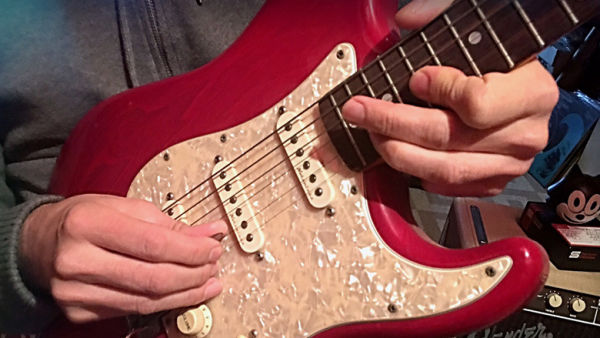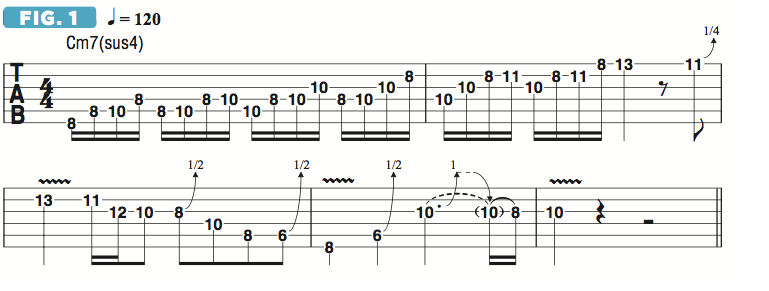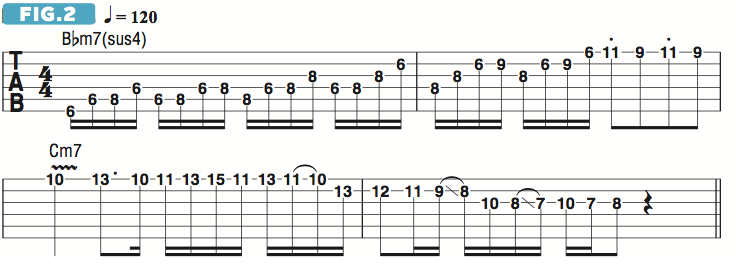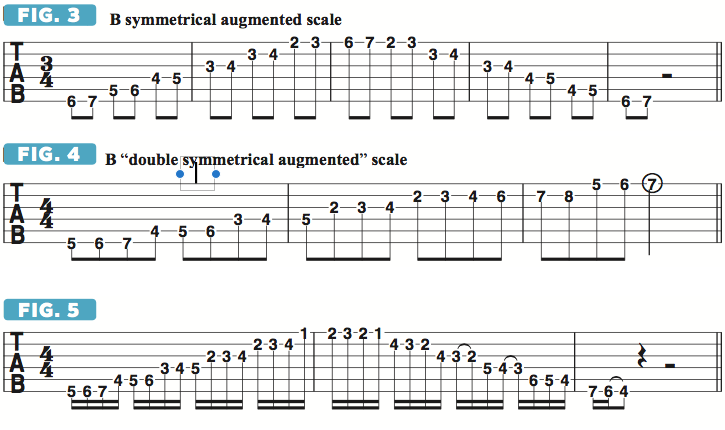Learn to Burn — My Approach to Warming Up
Learn how to warm up in a way that is both physically effective and musically rewarding.

Hello, and welcome to my new column for Guitar World. I’d like to begin this series of columns with a look at a topic all guitar players face on a daily basis: how to warm up in ways that are both physically effective and musically rewarding.
Most of the time, I warm up just by playing. I usually start with single-note lines, played in time, and move freely around the fretboard. Often, I’ll start each day with a bunch of stuff that I had been working on the night before. I’m always trying to learn, because each new bit of knowledge and skill offers a path to greater musical sounds and ideas. For that reason, I’ll often work on new musical ideas while warming up physically by putting on a metronome and freely riffing over the beat.
PART ONE
On the video that accompanies this lesson, I start with the metronome set at 120 beats per minute and freely improvise along with the click for a little over a minute. If I go back and analyze my playing, I can find some specific licks and scales that fall naturally under my fingers at the moment.
Figure 1 shows one of these licks, which is based on a C7sus4 arpeggio, built from
the notes C, F, G and Bb, which are the root, fourth, fifth and flat seventh, respectively. In this example, I play the arpeggio in ascending 16th notes, starting one note higher in the arpeggio in each four-note group. Once I reach the 13th fret on the high E string, I resolve the phrase with a descending line based on C minor pentatonic (C Eb F G Bb) combining quarter-, eighth- and 16th-note rhythms.

I follow this phrase with a similar lick played a whole step lower, akin to what is shown in Figure 2. I begin with a Bf7sus4 arpeggio (Bb Eb F Ab) that ascends in the same way as Figure 1, but I resolve the lick in bars 3 and four by moving back to the C minor sound with the use of notes from C harmonic minor (C D Eb F G Ab B).

We all play licks—specific phrases or musical ideas that we’ve learned and worked on over the years, and which have become staples of our musical language. However, when improvising with a band, I think it’s best to minimize the lick-based approach, because it can easily sound like you’re simply “reciting” the same stuff all the time. It’s better to find ways to switch things up.
PART TWO
Let’s wrap up with two scales that I like to superimpose over Cm. Figure 3 illustrates the B symmetrical augmented scale, which is a six-tone scale consisting of the notes Bb B D Eb F# G, played ascending and descending through two octaves. Even though there is no C note in this scale, I like the way it sounds over Cm. Figure 4 illustrates what I call B “double symmetrical diminished,” as an additional chromatic tone is added on each string. In Figure 5, I play the scales in ascending and descending patterns.

Get The Pick Newsletter
All the latest guitar news, interviews, lessons, reviews, deals and more, direct to your inbox!









![Joe Bonamassa [left] wears a deep blue suit and polka-dotted shirt and plays his green refin Strat; the late Irish blues legend Rory Gallagher [right] screams and inflicts some punishment on his heavily worn number one Stratocaster.](https://cdn.mos.cms.futurecdn.net/cw28h7UBcTVfTLs7p7eiLe.jpg)
